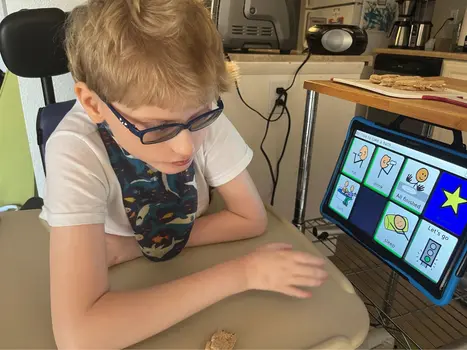Category: Feeding Tubes
Insider insights: Preparing for your child’s G-tube journey
Published by Feeding Matters on Feb 26, 2024
What to expect before and after your child’s G-tube insertion
So, you’ve finally decided to get a G-tube for your child. Arriving at this point in your child’s feeding journey can be a relief. Others may feel some regret.
Either way, says Karen Ellis, mother of a 2.5-year-old who recently got a G-tube, getting a G-tube can make life a lot easier for children with pediatric feeding disorder (PFD) and their parents. After a minor procedure, a short recovery and months of stress-free feedings, Ellis and her family are confident they made the right decision for their son.
G-tube insertion, or gastrostomy tube insertion, is a medical procedure where a tube is placed through the abdominal wall and into the stomach. This allows caregivers to deliver nutrition and medications directly into a child’s stomach. Some kids with a G-tube use it to supplement oral feeding. Others exclusively eat and drink through the device.
Learn more about the benefits for kids with PFD of G-tubes in this blog: Does your child need a G-tube? Here’s what you need to know.
Ellis’s son, Ishan, gets most of his nutrition through the G-tube. He eats and drinks orally as well. Ellis offers insight into what parents can expect from the G-tube procedure and the few months after it.
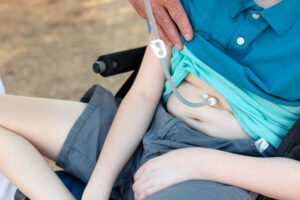
What to expect before the G-tube procedure
Ishan had an NG tube for a longer period than typical, says Ellis. Running after an active toddler to replace the tube whenever it fell out was a constant struggle. Since birth, Ishan has struggled with eating due to gastrointestinal issues and silently aspirating. He was often sick, didn’t eat age-appropriate amounts and was slow to gain weight. His parents pushed Ishan’s providers to consider a G-tube, but they were told their son might grow out of his feeding issues.
At this stage of the PFD journey, Ellis says following your instinct as a parent is essential to advocating for your child’s needs. “They wanted to blow everything off as normal parenting or a simple therapy issue, but knowing as a parent that there continues to be something wrong means you have to keep pushing,” she says.
What gave Ellis clarity, she says, was knowing they were trying hard enough. “He was doing his best, we were doing our best, but still, something was not quite right.”
What to expect during the G-tube procedure and recovery
For Ellis, the hardest part of the G-tube procedure was knowing it was elective surgery that required hospitalization. By the time Ishan was scheduled for surgery, Ellis knew it was necessary, but she still felt they had made a choice. Ishan’s procedure and recovery both went smoothly.
Like most kids, Ishan spent one night in the hospital. Ellis says he did experience some pain that first and second day. Ishan received pain medication and lots of TLC. They held him the whole time at the hospital and watched his favorite programs.
By day three and four, Ishan was back to running around and doing his typical gymnastics flips. He returned to his normal toddler antics in less than a week. “Kids are resilient, but we tried to hold him back from too much activity right after surgery,” she says.
For two weeks, Ishan had to skip his baths and only have sponge baths. In general, swimming in the pool or ocean tends to be okay, but lakes and rivers can be problematic.
Watch the skin around the G-tube because that can start to look angry and red initially. You can learn more about feeding tube care using What You Need to Know Now: A Parent’s Introduction to Tube Feeding. This resource, also provided in Spanish, was provided by the Feeding Tube Awareness Foundation with permissions to share.
What to expect in the months after a G-tube procedure
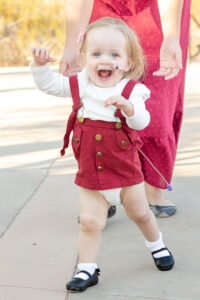
Adjusting to G-tube feedings takes some trial and error for parents and kids. Even months later, G-tube feeding requires adjustments when a child is less hungry due to an illness or more hungry due to a growth spurt. In the beginning, says Ellis, it’s important to go low and go slow with feeds.
At first, Ishan hesitated to let anyone touch his stomach, so his parents made buttons for his favorite stuffed animals. They fashioned these themselves, but you can also buy them. Ellis showed Ishan how opening and closing the button doesn’t hurt. They spent a lot of time talking about the button and getting used to it before diving into feeding.
Ellis also spent some time getting used to feeding her son through the tube. Overfeeding can cause vomiting or an upset stomach. She keeps a towel in the car in case of any incidents. “It’s hard to guess how much a toddler wants to eat. It’s never a perfect science,” she says.
Ellis offers three tips for G-tube feeding
- Find the formula your child tolerates best. Like baby formula, G-tube formulas come with different ingredients. The Ellis family found that the vegan formula has been better for Ishan than the milk formula.
- Stay consistent with oral feeding when applicable. Ishan eats orally two times a day. They do this before tube feeding so that his stomach isn’t full.
- Use a backpack. Cute feeding backpacks allow busy toddlers to run around independently during feeding sessions. Ellis tapes the tubing to the back of Ishan’s shirt or pants so it doesn’t come out while he’s running around.
These days, Ishan is happily playing and growing, and his parents are confident they made the right decision to get a G-tube. Ellis says it’s helpful to consider the G-tube feeding experience with PFD more like a marathon than a sprint. This can be harder for parents than kids, who tend to be more resilient. “As long as the kid is pretty happy and healthy, we’re the ones who are more stressed,” she says.
For more support in your G-tube or pediatric feeding disorder journey, check out our peer-to-peer mentoring program.
A story of triumph over pediatric feeding disorder
Published by Feeding Matters on Feb 15, 2024
The way pediatric feeding disorder (PFD) manifests in each child is as varied as the children themselves. But so many stories of parenting children with PFD are the same.
An infant struggles to feed and gain weight. Parents work tirelessly to feed their children and juggle medical visits. They search in the dark for a diagnosis of a complex problem they don’t understand, all while feeling alone and at fault.
Raising a child with PFD is a journey that rarely has a final destination. With the right support and care, it does get easier. This is the story of one mom of a son with PFD and how she’s gone from seeking help to supporting others.
One family’s journey with PFD
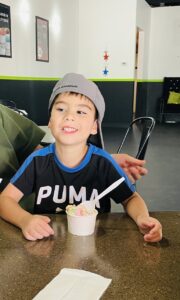
From the start, Erin Avilez’s son, Julian, struggled to breastfeed and gain weight. Her doctors were concerned about her baby’s measurements throughout her pregnancy. When her amniotic sac fluid was low, Avilez was induced at 37 weeks.
Julian was born at 5 pounds and right away had trouble sucking and taking in enough food at each feeding. Avilez switched to bottles, but Julian continued to undereat. “Within the first few months, there were already red flags that he was underweight and not getting enough nutrition,” she says.
Avilez and her husband started by switching formulas to see if Julian had some sensitivity to some ingredients. Still, they didn’t see much weight increase. Things got worse when her pediatrician sent Julian to a pediatric gastroenterologist. “That’s kind of where the horror of the story started,” she says.
Julian’s pediatrician and the GI weren’t communicating or working together and sometimes had different goals. “The GI’s only goal was for Julian to gain weight and cared less about how it affected his feeding,” says Avilez.
Julian got a nasogastric tube (NG tube) at three months old. The increase in calories made him vomit a lot, and he regularly pulled the tube out. Any time he pulled the tube out, Avilez would have to call her husband to come home from work so the two of them could force the tube back in. Insurance only covered a few tubes, making this devastating ritual even more difficult. Julian developed an oral aversion that he never had before and wouldn’t even let his parents touch his face. By seven months, Avilez insisted the NG tube be removed.
When Julian’s GI recommended a gastrostomy feeding tube (G-tube) instead, Avilez knew they needed a second opinion. Julian took some formula and solid foods orally, and Avilez thought they could build on that. A new GI at Phoenix Children’s Hospital agreed.
With a new pediatrician and GI, Julian’s doctors started working on finding a diagnosis. He was also able to join their intensive feeding therapy program. “The new GI doctor we saw listened, and he offered empathy and support,” says Avilez.
When Julian was 3.5, his family finally got a diagnosis of what caused his pediatric feeding disorder. A liquid and a food study showed that he has gastroparesis, a condition where the stomach muscles do not work properly to empty waste.
Now that Julian has a diagnosis, he’s able to take medication to help his gastric delayed emptying, as well as an appetite stimulant. He also drinks Ensure Clear to add more calories to his diet. Julian has an aversion to any formula or dairy because of his early experience with the NG tube.
In the past six months, Julian was finally registered low on the weight chart for the first time. “This is huge for him,” says Avilez.
Still, says Avilez, their struggle is never far from her mind. She dreads visits to the pediatrician when she knows Julian will be weighed. “Even today, a week before his appointments, I start getting stressed out because I know we have to get on the scale,” she says.
Finding support from other families with PFD
Julian was born during the pandemic, and Avilez left her job as a social worker to take care of him and to get to all his appointments. She suffered from postpartum depression and felt overwhelmed, alone and isolated.
“I knew there has to be some type of service out there to help moms like me,” she says.
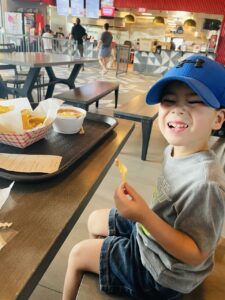
Avilez searched online and found Feeding Matters. She requested a peer-to-peer mentor and was matched with another mom who shared her experience. That empathy was powerful. “She listened to me. The first time I got off the phone with her, I started crying that somebody understood what I was going through,” says Avilez.
Avilez’s mentor also told her she was doing a great job. “Throughout this process, nobody told me I was doing a good job, not the doctors or anyone on his care team,” she says.
Avilez’s introduction to Feeding Matters was the first time she learned about PFD. “I felt so validated that we weren’t the only ones concerned about not knowing what was going on with our son and not hearing about it from our doctor,” she says.
Today, Avilez is a peer mentor to other parents raising a child with PFD. She’s grateful to have support and to be able to pay it forward. Her hope is that more clinicians and hospitals will inform parents about PFD from the start. “I wish that when you have a child with feeding difficulties, someone from the start would offer resources,” she says.
Key takeaways for supporting your child with PFD
Avilez offers the following advice to parents raising a child with PFD.
- Find a supportive care team: If the doctor’s not listening, find a more supportive provider. Having a good team in place makes all the difference.
- Trust your instincts: It’s okay to get a second opinion and ask questions. Keep advocating for your child because you know your child best.
- Find friends, family or a peer mentor: Find someone who will listen and understand so that you feel less alone.
Overturning insurance denials for PFD
Published by Feeding Matters on Sep 20, 2023
Navigating insurance coverage for pediatric feeding disorder (PFD) exacerbates the challenges of dealing with a complex medical diagnosis. The ICD-10 code that made PFD an official diagnosis meant getting the green light from insurance is significantly more straightforward today. But many families still face insurance denials.
Anyone who’s ever spent time on hold with an insurance call center or repeated a medical story multiple times to different agents knows how frustrating these calls are. Managing insurance bureaucracy while parenting a child with PFD is exhausting.
Stages of overwhelm are typical for families of children with PFD. Parents of young children in general are often sleep-deprived and stretched thin while balancing parenthood, work and life. Add multiple clinical appointments and round-the-clock feeding sessions to the mix, and it’s no wonder PFD parents are stressed.
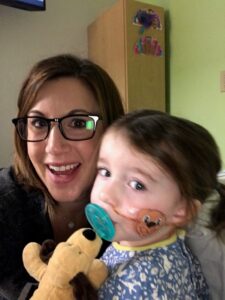
How one mom overturned an insurance appeal to for an important treatment
Emily Adams, mother of 6-year-old Morgan and a long-time insurance insider with USI, shares how she battled insurance denials and offers tips for other families.
Morgan had severe reflux as a baby and only ate from a bottle in her sleep. Despite “dream-feeding” all night, she continued to lose weight. At 1.5 she got an NG tube to get the nutrition she needed.
Eventually, Morgan’s reflux improved with the proper medication. Emily then searched for a feeding program that would repair her toddler’s relationship with food. Finding the perfect program at Nationwide Children’s in Columbus, Ohio and securing a spot there was a feat of its own. Getting insurance to pay for it proved just as challenging.
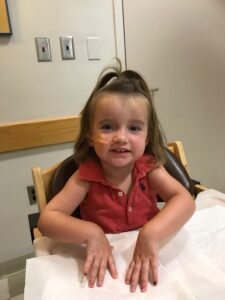
Morgan at that point didn’t have an official diagnosis because the ICD 10 code was not yet established. Clinicians had to get creative with billing codes for Morgan’s therapy sessions. It wasn’t unusual for United Healthcare to deny them. That meant Emily was used to appealing denials by figuring out what code to use and then having Morgan’s clinicians resubmit them.
This came to a head one Monday morning when Emily and Morgan prepared to temporarily move to Columbus to enroll in Nationwide Children’s outpatient feeding program. There was a two-year waitlist for the spot. It was then that the family learned their insurance wouldn’t preauthorize coverage.
Emily, who works in the insurance industry, managed to identify the insurance broker for her husband’s employer. Emily knew she recommended that the insurance agency deny their claim. She reached out and realized the broker assumed the cost would be exorbitant and the need wasn’t great. “Nobody has any idea what the expense is for each of these children because they all need different types of care at different stages,” she says.
Emily explained that the cost of not covering the program would be much higher if Morgan continued to need an NG tube and years of therapy. She convinced the broker to recommend the approval. “It was very last minute and very stressful. I’m in the industry and know how the game is played, so it was extra frustrating to see this happening to my kid,” she says.

6 tips for insurance appeals
Emily recommends the following tips for navigating insurance denials.
1. Be a fierce advocate for your family and child. When the insurance company denies coverage, insist that you’re not accepting no as an answer.
2. Speak to different people. Talk to your employer’s human resources department to find out how to reach the company broker. Explain to them about the treatment and the cost exposure. They may assume that the costs to treat your child are much more than they are. Present a budget of what your kid needs and what the expenses are.
3. Have a peer buddy who’s navigated this before.
4. Let a family member or friend go to important appointments with you. “In fight or flight mode, you’re not thinking clearly. You may not recognize the whole picture and miss a big piece of information,” says Emily.
5. Take detailed notes. “We hear things differently when we’re in stressful situations,” says Emily. A notebook to refer back to meant she could better advocate for her daughter.
6. Lean on your provider to help you advocate for coverage. Many hospitals have a patient advocate or liaison to help families navigate benefits and the appeal process.

When calling your insurance company, here’s a sample conversation Emily recommends using:
I know you don’t understand the complexities of my child’s condition. She needs speech and language pathology, occupational therapy, feeding therapy with a dietitian, pediatric psychologists and nurse practitioners to deal with this illness. Delaying care can delay my child’s progress and make it more expensive.
I need your help getting me to someone who can help all those codes appropriately process. Can you connect me to someone who has a better understanding of billing for complex conditions?
I’ll stay on the phone until you figure this out.
Navigating insurance for a child with PFD is frustrating, but it’s not impossible. Like so much of parenting, says Emily, “You have to be a fierce mama bear, talk to different people and make someone listen to you.”
Click here to download more information about your right to appeal an insurance denial and access a sample appeal letter template for PFD.
PFD in the Classroom: A special education teacher’s perspective
Published by Gabi Lake on Aug 22, 2023
After 8 years as an educator in the public school system, I have worked with a handful of students who have pediatric feeding disorder (PFD). The students I supported fell under broad spectrums of disability, and that does not exclude the spectrum that exists within PFD. Some children had g-tubes that required nursing accommodations and/or 1:1 aides; some had sensory sensitivities that made for a very limited selection of preferred foods; some children had to be spoon-fed with their food cut up and watched carefully for choking, gagging, etc.
It was a world that, for a long time, I generalized as “SpEd World.” It wasn’t until two years ago, when I learned about PFD through Feeding Matters, when I realized that PFD in many ways is a world of its own.
I wish I could say that PFD was something I was taught about in my college program; it was not. I wish I could say that I felt fully knowledgeable and prepared to support my students who had PFD; I was not.
On the very first day of school as a first-year teacher, I was face-to-face with a child who had PFD. There were times throughout the year, when I saw her sweet face become instantly distressed when she ran out of food in her lunchbox. It contained the only three things she ate: pureed fruit/vegetable blends (but only banana-apple-pear, sweet potato, and butternut squash… Other flavors, she would not eat and would know upon simply opening the puree pouch that it was not her safe foods), Nilla wafers, and vanilla-flavored milk.
Her parents packed what they knew to be a typical day’s worth of food for her, but on days when she was particularly hungry, she would eat through it by our scheduled 10:30 lunch, leaving nothing for 1:30 snack. She cried and screamed, and my heart just broke. I did everything I knew to do – offer her comfort, and offer her snack options from my cabinet. At the time, I did not know how specific and restrictive her diet was. Looking back, and knowing this student so well now, I realize that I caused even more distress in doing this. Her parents were amazingly accommodating, and we worked out a system to have extra supplies at school for her.
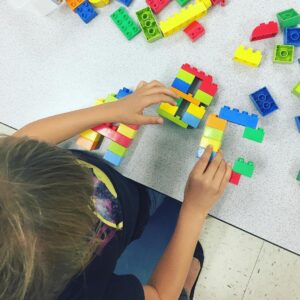
I tell this story not to discourage anyone, but to simply make the point that all teachers – even special education teachers, who have been trained in how to legally accommodate for a variety of unique needs – still need to be educated on pediatric feeding disorder. We know that roughly 1 in 37 children under the age of 5 in the United States are diagnosed with PFD; that means that there’s roughly one kindergartner in every classroom in America who has a diagnosis that we teachers know very little about and likely will not know how to accommodate.
The heart of a teacher is that of a giver, someone who wants to serve children and families and affect positive change in their community. In this way, we align beautifully to the heart and mission of Feeding Matters. We cannot, however, serve children and families without a growth mindset. We must always be seeking to learn new things, to improve our practice, and to gain a better understanding of the children we serve. PFD is one of the areas of knowledge that we teachers generally lack in, and this needs to be addressed.
I came to learn about PFD on my own terms, after gaining more and more students who fell into this category. I found Feeding Matters specifically when a student with a g-tube entered my classroom, because I felt I needed to know more in order to ensure his safety and wellbeing.
While it is amazing that Feeding Matters provides so much in-depth information, it is up to us to seek it out. I hope that we can integrate PFD into field programming at universities, not just for special education but for all educators across all specialties (because I know several students who are out in their grade-level classrooms with PFD as well!). Teachers should be prepared to serve these students, and this is the first step.
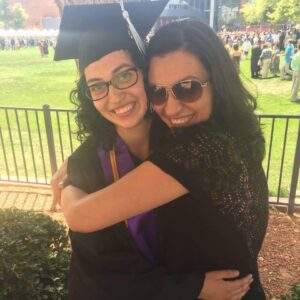
Below is a list of concepts that I feel should be included in educator academia:
- Definition, signs and symptoms of PFD
- Meaningful accommodations for PFD, (i.e., nursing services) and how these accommodations are written into IEPs/school documents
- Peer-reviewed research on how PFD affects development, including how their learning may be specifically impacted
While these are somewhat basic, this information is essential for teachers to effectively educate, advocate, and accommodate their students who have pediatric feeding disorder. With this as a solid foundation, we would be making a better world for children with PFD. And isn’t that the whole point?
Parents have provided permission for their student’s story and photo to be shared here.
Back to school with PFD: Tips for the new school year from preschool to high school and beyond
Published by Feeding Matters on Aug 16, 2023
When you spend hours every day feeding your child and running to therapy and medical appointments, starting school can seem daunting. Whether it’s at age 3 or later, there comes a time when your child is ready to head to school.
We asked three women experienced with different school stages for children through young adults with pediatric feeding disorder (PFD) to offer advice. Following are their stories and advice.

Transitioning to preschool with PFD
At the age of 2.5, when most toddlers’ parents are thinking about starting preschool, Liz Wiseman Smith was busy with too many hospital stays to count. Still, helping her daughter, Zoe, reach age-appropriate milestones as best she could was a priority.
Zoe was born prematurely with heterotaxy syndrome, which occurs when the heart and other organs are in the wrong place in the chest and abdomen. Before the age of two, she had five cardiac surgeries. Reflux from gastroesophageal reflux disease (GERD) meant that she needed a gastrojejunostomy tube (GJ-tube) that allowed her to eat through her intestine.
Health complications meant Zoe had just begun walking six months before school and communicated through sign language. Despite all she’d been through, the family was determined to help Zoe thrive.
“Our goal was trying to get her caught up as quickly as we could, but there was a lot to focus on,” says Liz.
Set up a communication plan
In Massachusetts, Liz was accustomed to a robust early intervention program where clinicians came to her home and left details from every session. Starting preschool meant figuring out how to transition from this open communication model to public school special education, which wasn’t likely to meet that same level.
Liz took it upon herself to initiate communication and found her daughter’s school was responsive. Zoe’s preschool teacher even developed a communication plan using a notebook, which the nurse updated.
Be sure your child’s school has the nursing staff you need – and a plan for substitutes
For kids with complex feeding issues, especially with feeding tubes, the school nurse is an integral component to successfully transitioning to a new school. This means connecting with the nurse before school and also ensuring the school has a plan for any days when the nurse might be absent. For Zoe, this meant she started school three weeks late because her school initially couldn’t find a nurse.

Transitioning to elementary school with PFD
Yomi Ogedegbe’s son, Joshua, is seven and beginning third grade. Although he is on the autism spectrum, he wasn’t diagnosed until age 4. He struggled with feeding since beginning solids, eating mostly a pureed diet, but only recently was diagnosed with oral dysphagia.
Having specific diagnoses has been key to accessing therapy services in and outside of school with insurance coverage.
Navigating her son’s autism and pediatric feeding disorder has meant that Yomi has learned valuable lessons about making the most of education and services in school.
Make your child’s IEP as detailed as possible
Yomi considers parents a key partner in developing her child’s Individualized Education Plan (IEP). Rather than leaving it to Joshua’s team of therapists, she did a lot of research to figure out what to include in the documentation. “If there are things that you think will be helpful, research to get the information so that when you ask for something, it’s backed by evidence,” says Yomi.
Be your child’s advocate
Just because something is written in your child’s IEP, doesn’t mean it’s necessarily followed all the time. Yomi says she regularly looks at Joshua’s IEP and calls to check with his case manager. “When they know you’re regularly keeping track of everything that’s supposed to be done, there’s more incentive to do what they’re supposed to,” says Yomi.
Ensure continuity of care
When your child receives therapy services, connecting the school team with outside therapists is important. For example, Joshua spent a month in an intensive feeding therapy program. Yomi connected her son’s school speech therapist to the feeding program team so that she could get trained on how to continue supporting Joshua’s feeding goals.

Transitioning to teen years and beyond with PFD
When Dana Kizer, MS, OTR/L was in school with her brother, Sean, who is medically complex, there were times when she would have to step in to support him. Once when Sean was more sensitive to touch and getting wet or messy, Dana saw him accidentally spill his lunch tray and had to run over to keep him from taking off his clothes in the school cafeteria.
Today, Dana is an occupational therapist, and her brother works part-time at Barnes & Noble. Thanks to feeding therapy support, Sean can enjoy a variety of foods and textures with safe oral motor skills. Still, he does sometimes need cues for pace and bite size.
As an OT and a sibling who continues to help out, Dana offers some tips for transitioning to high school and beyond.
Not every time can be therapy time
In times of stress, transitions and routine changes, it might be important to lean on comfort foods. For example, when Dana’s family went on a cruise, Sean would only eat chicken tenders by the pool. Out of his normal routine, it took a few days to adjust and for his anxiety to decrease. After a few days, Sean could eat a variety of foods without it being forced or stressful. “What we learned as a family is that we’re not always in therapy mode,” says Dana.
Focus on episodes of care
Transitioning to high school, college or a new job might mean your child with PFD needs what Dana calls short bursts of therapy focusing on a few goals. As an occupational therapist, many clients will see her in the summer to prepare for increased independence before a transition. This is especially important for teens and young adults who need new, age-appropriate regulating methods. “They might plateau in feeding therapy or take a break, but they return when their maturity level increases and they’re ready to be more independent.”
Having a child with PFD at any age means constantly adapting and learning. Getting support from those who have been through the journey before makes these transitions a lot easier.
This blog was adapted from a panel at the International Pediatric Feeding Conference. All three parents are members of the Feeding Matters parent advisory board.
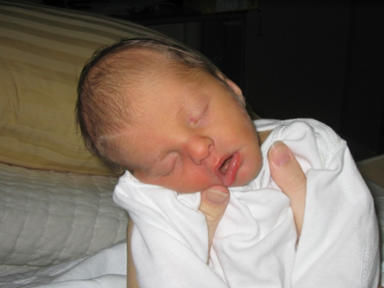
A mother’s journey with PFD shines a light on research
Published by By Hayley Estrem, PhD, RN, Assistant professor at UNCW on Jul 21, 2023
I clearly remember the day a doctor’s news changed my life. After months of chasing my baby around with a bottle to eat an ounce at a time, I learned Alex has a rare chromosome disorder.
The neurologist enthusiastically delivered the devastating news, charmed that he was the first to solve the puzzle of why Alex’s development was delayed. Even as a registered nurse, I found his explanation confusing. My shock meant I couldn’t have processed the information even if it had been simple.
How NOT to support families with pediatric feeding disorder
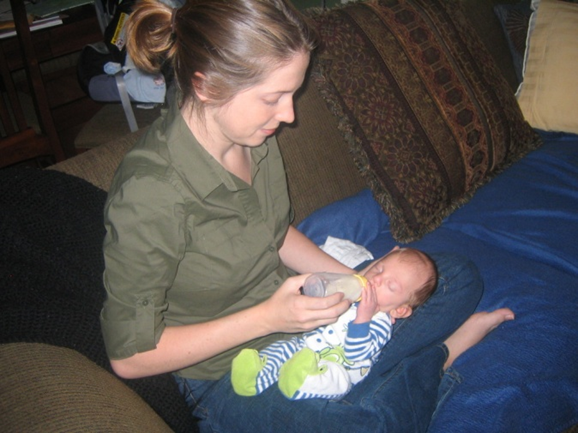
As a healthcare professional, that day was one of many where I learned how not to support a family of children with pediatric feeding disorder (PFD). The news should have come from a genetic counselor, my husband should have been there, and it should have been shared with compassion.
The journey before learning about Alex’s disorder was a struggle as well. Although he was my first, I knew it wasn’t normal for a newborn to eat only an ounce at a time. What he took in, he spat up. His growth was slow, and at 9 months, he was neither sitting up nor crawling.
Our pediatrician told us to give it time, that I was a nervous new mom and that Alex was slow to grow because it was a difficult pregnancy, and he would catch-up. It wasn’t until we saw a different provider at 9 months that we were connected to a neurologist, geneticist and Early Intervention (EI) services. This too, was a lesson in how not to support families of children with PFD.
Armed with a diagnosis and therapy services, we hoped to help Alex eat more and get the calories he needed to grow and develop. Instead, we were told to try harder to feed him and to schedule weekly weigh-ins. A feeding tube was held over our heads like a threat, as if inserting one would signal our failure as parents.
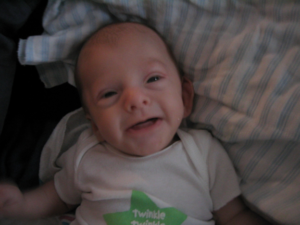
By the time Alex was 18 months and weighing only 16 pounds, I nearly begged for a G-tube. When he finally got one and started gaining weight, I couldn’t help but wonder why we were encouraged to try so hard. Why didn’t he have the nutrition he needed during such a critical developmental time?
Alex’s genetic diagnosis and the PFD that came with it became a springboard for my career. I had a choice to struggle with the question, “Why me?” or do something that would make this odyssey less painful for others.
I chose the latter.
Leading research to support families of children with PFD
After completing a master’s degree in nursing education and then a doctorate in nursing, today I research PFD and how it affects the entire family unit. I’m dedicated to fixing what we went through for others.
At the beginning of Alex’s diagnosis 15 years ago, there wasn’t common terminology among physicians and clinicians. This was a focus for my dissertation because it is a big barrier to building research and supporting families of children with PFD.
It’s why I have a big affinity for Feeding Matters, who did the work to get a PFD ICD-10 diagnosis.
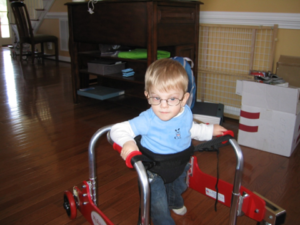
One of the things I’ve done with our Feeding Flock Team is to develop several parent questionnaires about feeding behavior, skill, family management of feeding, and parent and family impact of feeding. For example, on a project with researchers and clinicians at Children’s Hospital of Atlanta, we are developing an assessment of the impact of intense food allergy regiments on caregivers and households.
Our goal is to provide data to clinicians and parents to help determine whether a food allergy intervention eases the psychosocial impact that food allergy has on everyday life for parents and families. For example, new oral immunotherapy treatments for food allergies require children to take a certain amount of allergenic food and have activity restrictions every day at a specific time. Is the cost-benefit worth it? Ultimately, the child still needs to avoid the food, but should have less severe reactions if exposed to small amounts unintentionally. Are there quality of life improvements for the family? We only know if we measure this.
I’ve interviewed parents as I go through the process of developing measurement tools for PFD, and I’ve heard their stories. Witnessing what others go through and being in the position to do something about it is what gives our family’s struggle meaning.
Because of our experience with feeding therapies, I learned to ask more questions. And I learned that research for PFD must be patient-centered. Only with patients who have experienced PFD and their families at the helm can research lead to better journeys and improved outcomes for the whole family.
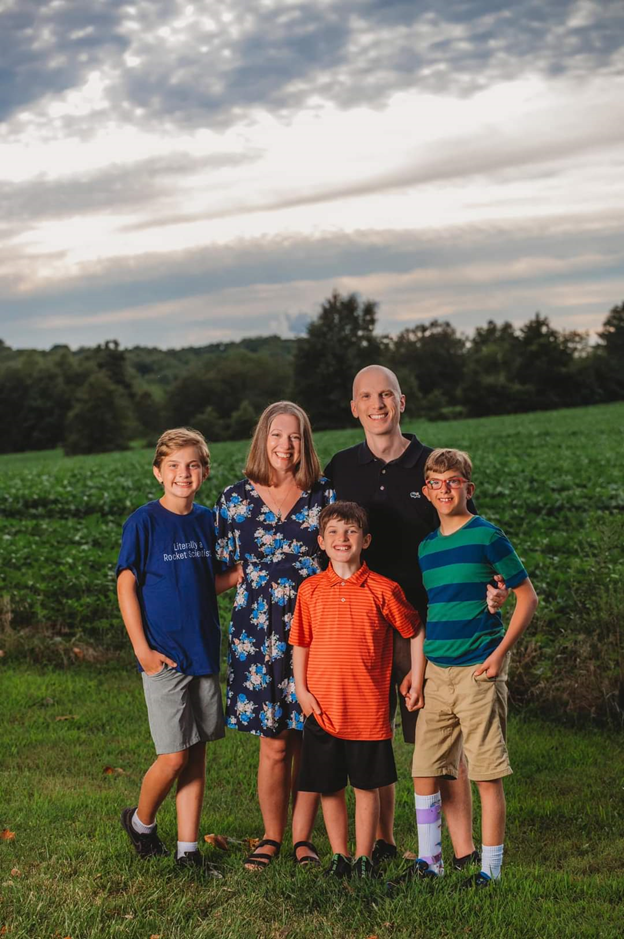

The Power of Two: Ishan’s Story
Published by Karen Ellis, Mom to Ishan on Jul 19, 2023
When my son, Ishan, was initially hospitalized for aspiration pneumonia, failure to thrive, and feeding intolerance, an NG tube was placed. I felt so defeated. I felt terrified. I felt anger. I felt overwhelmed.
I watched my infant son struggle in the hospital to breathe, to eat. I thought perhaps since we were being seen at the children’s hospital, I would get the social support I needed– to feel seen, to get connected to resources like a new childcare option now that the NG tube made it impossible for Ishan to return to full time daycare, and to navigate this new world, but like too many families, that wasn’t my experience.
I was so isolated. Family and friends who expressed their desire to help, didn’t know how. I didn’t have the capacity to tell them how. I was consumed with keeping my son eating, keeping him breathing. Well-meaning family and friends didn’t understand my son’s health issues. It felt like they didn’t care. When the NG tube was placed, people thought he was ‘better’ and any offers of support seemed to stop altogether.
Desperate, I started looking online for support groups and I found Feeding Matters. I requested to be a part of mentorship pairing through their Power of Two program. I was paired with a parent mentor who had ‘walked in my shoes’ with their own child’s with feeding issues. The first time Leilani called, I was a wreck, but her positive and understanding energy was everything to me. She reminded me to recognize the tiny moments I was grateful for. She told me to celebrate every little positive step, to laugh at every laughable moment. I was so burned out but her encouragement and experience helped me to change in small ways and become the mom and healer my son needed me to be.
We left the hospital with the NG tube and began feeding therapy once we got home. Months later, I am happy to share that we are getting ready to wean Ishan from the NG tube. I regularly call and text Leilani with updates, questions, and ask about how her son is doing. It’s heartening to see a parent further in their journey with pediatric feeding disorder, to see that life moves forward and progress can be made.
Ishan is my whole world. He is a fighter. He is a joy. Despite having approximately 20 different diagnoses related to feeding, he is eating orally and enjoying exploring food. I am thankful for every day, every meal, every moment with my boy.
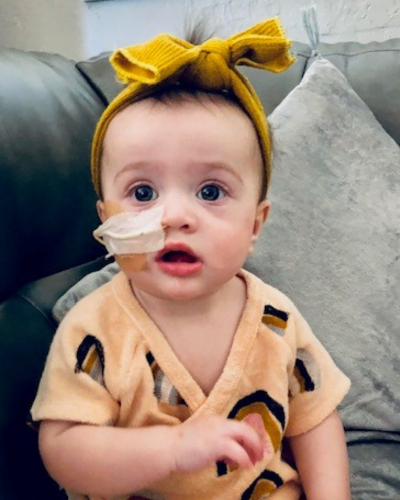
Pediatric Feeding Disorder to ARFID: A Young Child’s Journey
Published by Feeding Matters on Jun 26, 2023
Not long after Alexandra Marcy’s third child was born, she knew something was wrong with her eating. From the start, her daughter, Emerson, wasn’t latching properly. “I was told at the hospital that her latching would come naturally. We tried for a few days, and I knew it wasn’t normal,” she says.
It wasn’t long before Emerson’s diapers were dry.
A doula friend suggested Emerson might have a tongue tie, making it hard for her to latch. Not only did she indeed have a tongue tie, but she also had a lip tie and a buccal tie – a cheek tie that results from an abnormally tight frenum. Emerson underwent a laser procedure on all three, and Alexandra started using a nipple shield while breastfeeding.
Even then, says Alexandra, “She’d get a little bit of milk but never enough. Any time I tried to nurse her, she’d scream.”
Those early feedings began a four-year feeding journey that’s still developing today. What began as a medical feeding issue then is today a psychological issue. The Marcy family continues to navigate the uncertain path between pediatric feeding disorder (PFD) and Avoidant Restrictive Food Intake Disorder (ARFID).
Click here to read about PFD and ARFID and how the two diagnoses can overlap.
See here why misdiagnosing PFD and ARFID can do more harm than good.
Following is their story.
One young child’s journey from PFD to ARFID
Alexandra gave up on breastfeeding early and instead pumped milk for Emerson. The baby never took more than an ounce at a time. Even then, Emerson would spill milk out of her mouth and gag. Like many parents of children with PFD, Alexandra spent most of her time around the clock pumping and feeding her daughter.
Emerson also sounded congested all the time. Her pediatrician assured Alexandra this was normal.
Alexandra wasn’t convinced, and at three months, baby Emerson was breathing strangely and seemed limp. It was RSV season, but a swab and an X-ray seemed fine. But Emerson hadn’t gained weight since her previous pediatric appointment. When Alexandra returned a week later for a weigh-in, the baby lost a few ounces. The pediatrician recommended Alexandra supplement with formula. He suggested her breast milk wasn’t fatty enough. Emerson lost more weight even with formula.
They ended up at Phoenix Children’s Hospital (PCH) when Emerson was four months old. “I saw so many doctors, who all thought her breathing and eating will be fine. We were there for over a week without any answers,” says Alexandra.
It wasn’t until Alexandra, who worked in a therapy clinic, managed to connect with a feeding therapist from her team that she got some answers. She looked over Emerson’s original X-ray of her lungs from when Alexandra suspected she had RSV and saw shadows in the image. A second X-ray showed the shadowing had gotten worse since then. This was a sign the baby was aspirating.
The family turned to a gastrointestinal doctor for answers. Emerson was diagnosed with allergies and started an animos-based formula, which helped. “Still, though, she was a terrible eater. It was hard to get 4-oz. into her,” says Alexandra.
It seemed like any time Emerson would make some feeding progress with her feeding therapist, she would get an upper respiratory infection or rotavirus that would set her back.
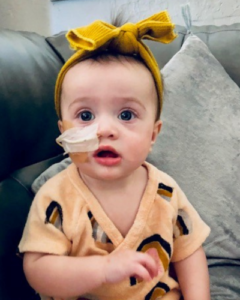
Emerson got an NG tube to build up her strength. The NG tube helped the baby gain weight, but Alexandra still remembers it as traumatic. “Any time it came out, I’d have to have my eight-year-old hold her down while I put it back in her. It felt crazy and sad.”
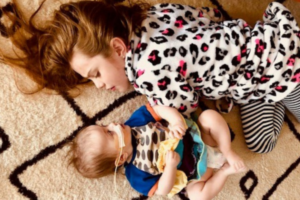
Eventually, Emerson was diagnosed with:
Type 2 laryngeal cleft: An abnormal opening between her larynx and the esophagus that allowed food to enter her lungs
Tracheobronchomalacia: Her weak tracheal or bronchial tubes would collapse any time she ate or cried.
Dysphagia
“Finally, we had answers, but no way to fix it,” says Alexandra.
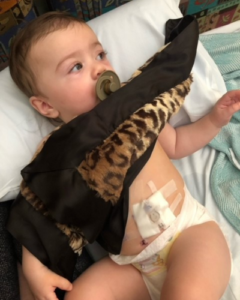
At eight months, Emerson transitioned to a G-tube as a long-term feeding solution. “This was so much better because I could see her beautiful face. She wasn’t gagging and throwing up,” says Alexandra.
The G-tube even helped Emerson overcome some food aversions to try solids. Alexandra added her to the months-long waiting list to get into the feeding program at PCH.
Thanks to the family’s hard work, Emerson progressed and eventually got into the feeding program. But at age three, she started to regress again. She stopped eating most of what her parents offered, accepting only four foods.
Even after three weeks in an intensive feeding therapy program at PCH, Emerson wasn’t progressing. At that point, all her medical issues had been addressed and resolved.
The hospital team suggested Emerson see a psychologist, who thought the three-year-old could have ARFID. Eventually, Emerson was diagnosed with ARFID and obsessive-compulsive disorder (OCD). She was young for both psychological diagnoses, but a child psychologist and a child psychiatrist agreed.
Emerson was treated with EMDR therapy to help her reprocess the medical trauma she experienced as a baby and toddler. “Any time she eats, she doesn’t want to feel pain, so this makes her restrictive and gives her intrusive OCD thoughts,” says Alexandra.
A psychiatrist who has worked with many children with PFD and ARFID prescribed medication, helping Emerson be more open to new foods and eat more. Things have gotten easier, but still, says Alexandra, their journey isn’t over. “She just doesn’t care about food. She doesn’t act hungry, and I have to remind her to eat.”
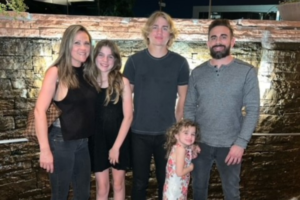
Alexandra hopes sharing her family’s story will help others navigate a similar path.
For more information, visit Feeding Matters’ resource page: PFD and ARFID. If you are a parent needing support, check out our family support resources .
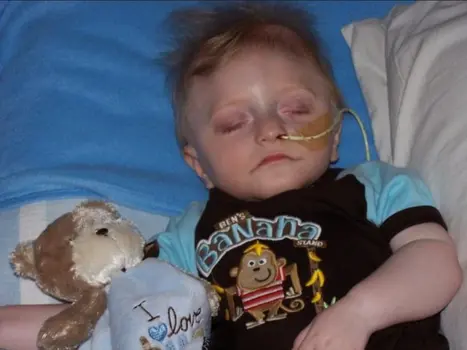
Does your child need a feeding tube? Here’s what you need to know
Published by Dana Williams, MD on Feb 09, 2023
A pediatric gastroenterologist debunks 4 myths about G-tubes and normalizes a feeding tube for those kids who need it.
 Dana Williams, MD, Medical Director, Feeding Disorders Multidisciplinary program; Medical Director, Aerodigestive Digestive Program at Phoenix Children’s Hospital
Dana Williams, MD, Medical Director, Feeding Disorders Multidisciplinary program; Medical Director, Aerodigestive Digestive Program at Phoenix Children’s Hospital
When I see patients who are likely candidates for a G-tube, I can already imagine their lives at home. Days revolve around feedings. Every hour, on the hour, the parents attempt to get an ounce of formula or breastmilk into their little one’s belly. The parents are exhausted, and so are their children. Everyone feels like a failure.
In spite of the struggle, no one wants to bring up a G-tube. So, I do.
As director of a team of physicians, therapists and dietitians at Phoenix Children’s Hospital, I see hundreds of children each year with pediatric feeding disorder (PFD). For many of them whose medical complexities make oral eating a struggle, a gastrostomy (G) tube is a key medical intervention. G-tubes help these children develop and thrive, while preventing malnutrition and dehydration.
A G-tube is surgically inserted through the abdominal wall and into the stomach. It’s held in place by an internal device called a balloon. The tube can be used to deliver liquids, purees and medication.
This sounds scarier than it is.
Like any surgical medical intervention, deciding to directly feed a child through a gastrointestinal tube inserted into their stomach is a big decision. For those children who are a good candidate for a G-tube, the benefits of a feeding tube and the risks of not getting one far outweigh any risks.
There are many benefits of getting a G-tube. Some of those include:
- Improved nutrition and hydration: A G-tube provides direct access to the stomach for nutrition, fluids and medication, ensuring children get the nutrition they need.
- Reduced risk of aspiration: A G-tube can reduce the risk of food and liquid entering the lungs, a common problem for children with pediatric feeding disorders.
- Increased independence: Children with G-tubes can engage in activities they enjoy without the stress of constantly worrying about eating or drinking.
- Better sleep: A G-tube can provide continuous nutrition and hydration overnight, leading to better sleep and improved overall health.
- Eased caregiver burden: Parents get relief from constantly trying to provide adequate nutrition and hydration.
- Improved weight gain and development: Children with a G-tube often see improved weight gain, leading to better overall health.
- Comfort: Removing the alternative temporary nasal tube can make it more comfortable for a child to eat. Depending on each child’s medical journey, they may be more likely to eat when they don’t have hardware in their noses.
Still, many parents who consider a G-tube for their children can feel like a failure. The truth is the opposite. Feeding isn’t something parents or doctors or anybody can control. If a child doesn’t want to eat, or they can’t eat, then there is nothing anyone can do to make them. Of course, this can change over time with multiple levels of support. But the parents of these children haven’t failed.
Debunking 4 major myths about G-tubes
Most of the time that parents express hesitation about the G-tube, it’s because of a fear of one or more of four common myths. Talking about the reality of what a G-tube will mean for a child and the family helps parents make an informed decision.
Myth #1: A G-tube is permanent
A G-tube is a temporary solution to supplement or replace oral eating and drinking. I have countless patients living healthy lives after the removal of their G-tubes who will attest to that fact.
How long each patient needs a G-tube and whether they’re receiving all or some nutrition through the tube depends on each child’s needs. When a family is deciding about G-tube surgery, we discuss the anticipated use. In many cases, a G-tube can supplement – rather than replace – oral eating.
We also discuss the process for removing a G-tube for those kids who can eat fully orally one day.
Myth #2: Infection is common with a G-tube
Infections do occur for some people with a G-tube, but they’re not common. Some children are more sensitive, and there is no way to predict that. For most people, the channel for the G-tube heals nicely. Similarly to an ear piercing, it becomes epithelialized so that the tube can comfortably pass through the area. We monitor the insertion hole and mitigate the risk of infection by teaching parents and older children how to clean the area.
Myth #3: Kids can’t eat regular food with a G-tube
The majority of kids with G-tubes in our practice also eat orally. This varies for each child, depending on their medical issues. Most children I see even take pleasure in oral food. The G-tube is an important tool that gives children time to develop the ability to eat on their own terms.
Myth #4: A G-tube means kids won’t be motivated to eat orally
While there is some truth to this myth, it’s not entirely accurate. For many kids with PFD, it doesn’t take much for them to feel full. This is why we individualize treatment so that each child receives the amount they need. Children can still learn hunger cues and get exposed to meal time routines.
What is a sign of success for a child with a feeding tube?
Just as the treatment plan for every child with a feeding tube is different, success also varies. To me, the main signifier of success is when the patient and family are in close conversation with their doctor. Every journey is different, but having a team of the right medical provider matters. It’s not up to parents to walk this journey alone.
Beyond that, any step forward for a child is success. Some examples are as follows:
- A child who aspirates due to a medical condition safely learns to taste some food and enjoy family meals.
- A child slowly learns to eat orally through feeding therapy post heart surgery.
- A child who outgrows some allergies and tries more foods.
- A young adult who goes off to college even though he still only eats seven foods.
Parents of children with pediatric feeding disorder no doubt feel responsible for ensuring their children get the nutrition they need to grow and develop. For those children who are good candidates for a feeding tube, a G-tube is an important tool to help them along their feeding journey.
Hadyn Van der Molen has had a G-tube since he was nine months old. His mom, Heidi, program manager for Feeding Matters, recalls feeding Hadyn around the clock with a 2-oz. bottle. The only time he’d ingest it was when he was sleeping.

